15 Best Self-Esteem Worksheets and Activities (Incl. PDF)
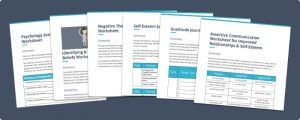 We all experience moments of self-doubt and uncertainty. Even the most confident and happy people have moments where they think, “I’m such a failure.”
We all experience moments of self-doubt and uncertainty. Even the most confident and happy people have moments where they think, “I’m such a failure.”
It’s a part of being human. However, if you find yourself having these kinds of negative thoughts frequently or letting these feelings get in the way of living a healthy and happy life, it may be time to do something about it.
Luckily, there are many ways to increase your sense of self-worth. It probably won’t be easy, but it can certainly be done.
Building self-esteem can be a difficult, though rewarding, journey in adulthood. It’s much easier to develop this characteristic at a young age and to foster it while growing up. If you are a parent, child therapist, teacher, or any other valued adult in the life of a child, you can use these tools to begin cultivating a healthy sense of self-esteem in the children in your life.
We’ll provide several methods and activities for building self-esteem, starting with self-esteem worksheets for young children and ending with self-esteem worksheets for adults.
Before you read on, we thought you might like to download our three Self-Compassion Exercises for free. These detailed, science-based exercises will not only help you show more compassion and kindness towards yourself but will also give you the tools to help your children, young clients or students learn how to practice self-compassion and develop healthy self-esteem.
This Article Contains:
- Self-Esteem Worksheets for Kids in Primary School
- 5 Self-Esteem Activities for Teens in Middle or High School
- Exercises for Building Self-Esteem in College Students and Adults
- Tips for Overcoming Low Self-Esteem and Low Self-Worth
- Ten Days to Self-Esteem Improvement: An Action Plan
- A Take-Home Message
- References
Self-Esteem Worksheets for Kids in Primary School
Primary or elementary school is a fantastic time to start helping a child develop self-esteem. A child’s mind is generally much more flexible and open than an adult’s, so it’s ideal to begin planting the seeds of healthy self-esteem at an early age.
The worksheet and activities listed below are some of the ways you can help a child develop the self-esteem that will act as a buffer against some of life’s most difficult obstacles and challenges.
Something About Me: Self-Esteem Sentence Completion
This is an activity that both children and adults can get engaged with, although this worksheet is geared toward children. A similar worksheet for adults is included later in this article.
This “Something About Me” worksheet is intended to help children identify their own positive traits and characteristics and to recognize their accomplishments.
It’s a simple worksheet with six sentence prompts and space for a child to fill in the blanks.
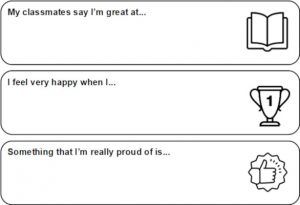
- My friends think I’m awesome because…
- My classmates say I’m great at…
- I feel very happy when I…
- Something that I’m really proud of is…
- I make my family happy when I…
- One unique thing about me is…
These sentences are constructed with clear and uncomplicated language that most elementary school students should understand, but it may help to go over this worksheet with your child. Encourage your child to think about each sentence and not to rush.
Completing this activity can help children build the foundations of an authentic and healthy self-esteem that they can carry with them for the rest of their lives.
Click to see the Something About Me Worksheet.
Things I Like About Me Worksheet
This worksheet was created to help young children learn how uniqueness makes a person beautiful. This worksheet should be completed with a parent or other trusted adult to help explain the distinction between inner beauty and outer beauty.
The worksheet includes the following instructions:
“You are beautiful because you are unique, both on the inside and on the outside. Look inside and outside at your personality, what you can do, how you treat others, and who you are, then write down some things that you like about you on this mirror.”
Also included is the prompt “Things that make me beautiful” and space to write five things. It’s okay to write something external, like “my hair” or “my eyes,” but make sure your child writes at least one or two inner traits or qualities in addition to the external qualities.
It’s never too early to start combatting the extreme focus society places on external beauty, and this worksheet is a great start. Of course, it can also be used with boys to help them learn the same lesson.
Click to download the Things I Like About Me Worksheet and give it a try.
“I’m Great Because…” Worksheet
This worksheet can be an excellent way for young children to explore what makes them good and likable people, and to help them build a foundation of healthy self-esteem. The instructions are to print it out and complete the statements—without worrying too much if the user can’t complete them all—and keeping the worksheet handy for the next time the user experiences feelings of low self-esteem.
The worksheet lists 20 sentence-completion prompts that children fill out with something positive about themselves. A reason, in other words, that they are great. These prompts include the following:
- I like who I am because…
- I’m super at…
- I feel good about my…
- My friends think I have an awesome…
- Somewhere I feel happy is…
- I mean a lot to…
- Others reckon I’m a great…
- I think I’m a pretty good…
- Something I really enjoy is…
- I really admire myself for…
- My future goals are…
- I know I can achieve them because I’m…
- I’m naturally gifted at…
- Others often praise my…
Completing this worksheet will give your child an opportunity to list all of the good things about himself or herself without fear of being overly proud or self-absorbed.
It’s good to be both realistic and positive about yourself, and this is a good way to begin a habit of positive realism. Children may need an adult’s help in completing this worksheet, but try to let them come up with their own ideas about the traits and characteristics they like about themselves.
Try this I’m Great Because… Worksheet for yourself.
Friendship Ingredients
This is a great worksheet for helping children learn about what makes them good friends and what they should look for in a friend. Completing this worksheet will likely take some guidance from an adult, but it can be a positive way for children to start thinking about what kind of people they want to be.
It’s a simple activity with only one short set of instructions:
“Making friends is like making a cake. List the traits that are important for making friends”
Next, it provides spaces for the child to write down five traits—or friendship “ingredients”—and explain why they are important in a friend. The simple nature of this worksheet allows children to put their imagination to good use.
They might need some help from an adult, but they should be able to come up with several traits that they find important in a friend.
Click to download this Friendship Ingredients Worksheet and help your child learn how to both find and be a good friend.
Self-Esteem Journal For Kids
This activity is great for any age, but this template is meant specifically for young children. We’ll explore an adult version later in the article.
Keeping a self-esteem journal is a great way for children to begin thinking about the good things that they do and experience, setting them up for a positive outlook on life. This worksheet lists three-sentence completion prompts for each day of the week, starting with Monday.
The prompts include “One thing I did great at today…,” “Today it was interesting when…,” and “I made someone smile when…”
Completing these prompts every night for a week should help your child feel more optimistic and begin focusing on the good things that happen instead of the bad. Follow this link to download and use this Self-Esteem Journal Worksheet with your child.
5 Self-Esteem Activities for Teens in Middle or High School
While it’s best to start self-esteem building young, there is still tons of room for growth and development in this area for middle- and high-schoolers.
The activities and worksheets below can help your teenager start or continue to build a healthy sense of self-esteem.
Designing Affirmations Worksheet
Affirmations are a popular way to help combat low self-esteem in both adults and adolescents (Bloch & Merritt, 1993; Lynch & Graham-Bermann, 2000).
This worksheet will guide adolescents through one of the most popular, tactical approaches to designing affirmations. You’ll find instructions on how to create effective affirmations, as well as example goals, affirmations, and tips to help you.
In a nutshell:
- Affirmations start with the words “I am…”;
- Affirmations are positive. Never use the word “not” in an affirmation. For example, instead of writing “I am not afraid to express myself,” you could write, “I am confidently sharing my opinion”;
- Affirmations are short;
- Affirmations are specific. For example, instead of writing, “I am driving a new car,” you would write, “I am driving a new black Range Rover”;
- Affirmations are in the present tense and include a word that ends in “-ing”;
- Affirmations have a “feeling” word in them. Examples include “confidently,” “successfully,” or “gracefully”;
- Affirmations are about yourself. They should be about your own behavior, never someone else’s.
Once you have read and understood the guidelines, the worksheet provides space for you to write down some affirmations of your own. Refer back to the guidelines as much as you need.
When you have a set of affirmations ready to put to use, you can try these tips for using them:
- Use positive self-talk;
- Set big goals and stay mindful of your goals (write them down and place them somewhere you can see them every day);
- Say and visualize your affirmations every day;
- Take time to see yourself accomplishing the goals you’ve set;
- Think about how good it will feel once you have accomplished your goals.
To get into the habit, try to start by sticking with a schedule—for example, you might try repeating your affirmations:
- When you wake up
- On your break at school or work
- Before going to sleep
Visualizing and planning for success makes it much more likely that you will achieve your goals. If needed, give your child guidance and support when coming up with affirmations, but allow them to take ownership of this activity and see the amazing results of their commitment.
You can access the Designing Affirmations Worksheet here.
Understanding Self-Confidence Worksheet
This worksheet can be completed by adolescents who wish to build up their self-esteem and self-confidence. The completed worksheet can be kept handy for the next time you’re feeling low in self-esteem and need a boost.
You can always your worksheet and be reminded of your personal power, and use it to transform situations in which you feel less confident.
The worksheet is divided into three parts:
Part A involves thinking of a situation in which you felt confident and experienced a sense of self-worth, and answering the following questions:
- What is the situation?
- What do you say to yourself about the situation (self-talk)? How do you feel physically?
- What sensations and feelings do you have in your body?
- What do you do as a result of this?
Part B involves thinking of a recent situation in which you felt lacking in self-confidence and answering the same four questions listed above.
In Part C, you are instructed to look at your answers to Parts A and B, then use that information to answer these questions:
- What positive statement could I say to myself to be reminded of my power?
- What could I do that would help me feel differently? (For example, create a visualization in which you remember how you felt in Part One.)
- What could I do differently next time I am in this situation? What actions would empower me?
Completing this worksheet will help adolescents explore their feelings in two very different situations, analyze their responses to these situations, and come up with an action plan for the next time they experience low self-esteem. This exercise will help them take control of their development and give them a sense of ownership in their own wellbeing, a trait that will serve them well in the future.
Click this link to see the Understanding Self-Confidence Worksheet.
You, At Your Best Worksheet
This worksheet is a great way to help clients reflect on the personal character strengths that define them at their best. The exercise aims to use narrative and storytelling; clients are asked to identify their unique strengths by writing a story about a past experience where they were “at their best”.
It takes them through four stages:
- Start by asking your client to recall a specific occasion during which they were at their very best. It could be a problem or difficult time that they overcame successfully, or where they accomplished something they were proud of. It should be a situation in which they felt energized, positive, and proud, and they will create a (true) story about it.
- They then write the story, emphasizing their own character strengths and personal values in the narrative. Using descriptive language, this second step is about recounting what happened, what they brought to the situation, the emotions they felt, and/or the ways they helped others.
- Your client’s story should be structured with a start, middle, and a powerful ending. Writing the narrative might be easier if they try to vividly reconstruct the experience in their minds while doing so.
- This handout/homework worksheet then instructs the client to go back over their story, circling or highlighting keywords and phrases that they feel relate to their personal strengths.
This subjective, feelings-based exercise is a useful way for you or your client to reflect on their unique character strengths and qualities, helping to enhance their self-esteem.
Find the You, At Your Best Worksheet in our Positive Psychology Toolkit©.
My Wins
This activity is especially great for kids and younger teens who are crafty and creative, although people of all ages and talents can take part.
The My Wins Worksheet is an artistic prompt for you or your child to draw, paint, or otherwise represent the things—their achievements and qualities—about themselves that are important to them. You may wish to use a theme for this activity or for each ‘win’, like “family,” but it’s okay to engage in this activity with no specific theme in mind as well.
This is a simple worksheet that has only the outline of different certificates. In each, your child can represent the personal qualities, achievements, and traits that they value.
For example, if your child is dealing with self-esteem issues, he or she can use the theme “What Makes Me Great” and focus on filling the frames with reasons why he or she is a good friend, a good child, a good student, and a good person in general.
Before You Die
This activity uses a very basic technique that you can build upon as needed. The point of this activity is to help your client identify meaningful goals that are connected with their personal values.
Striving toward and achieving one’s goals is an important way to build self-esteem. You build the most solid foundation of self-esteem and self-confidence with the building blocks of positive experience and success. The more individuals recognize their ability to meet the goals they set for themselves, the more likely they are to feel confident and worthy.
This ‘Before You Die’ Bucketlist Worksheet provides more information on the theory behind goal-setting, motivation, and positive behavior change, as well as an applied framework that will guide your client through the process.
- The first column of the table provided is for specifying the goal that your client would like to accomplish ‘before they die’. Try to make these as specific as possible, regardless of whether or not they are practical. A useful question to ask when filling out this column is, what would I like to accomplish if I had only one year to live?
- In the second column, the client is encouraged to dig a bit deeper into the personal motivations for this particular goal. Why is it important to them? How might it enhance the meaning in their life?
- Use the final column to rate the meaningfulness of these items on a scale of zero to ten, where 0 = not at all meaningful, and 10 is extremely meaningful.
At the end of this exercise, the user should have a list—or at least the beginnings of a list—which features meaningful life goals, a stepping stone toward confidence, self-worth, and self-esteem. You can access the worksheet by subscribing to the Positive Psychology Toolkit©, with over 400 exercises.
Exercises for Building Self-Esteem in College Students and Adults
Again, while building self-esteem is a practice best started young, it’s never too late to begin investing in your own self-worth.
Self-Esteem Sentence Stems Worksheet
This worksheet leads the reader through a sentence completion exercise for adults. This exercise is exactly what it sounds like: It includes prompts with space for you to complete the sentence in the way that feels right to you.
Completing this exercise can help you explore your thoughts and feelings, and to open up and share them with others. For users of this worksheet, this exercise will help them become more comfortable sharing their thoughts and feelings with others, making it easier to work through their self-esteem issues.
Next, it instructs users to set aside 5-10 minutes several times a week to complete the worksheet. After two weeks of completing the worksheet, users can review their responses to get an idea of their general outlooks on life and see how things have changed since they began.
The intended result is for the answers to become more positive over time.
After the instructions, the sentence prompts are listed, including:
- I have always wanted to…
- I’m secretly afraid of…
- This week I would enjoy doing…
- I often look forward to…
- I feel something that the future holds for me is…
- I get my strength from…
- One person couldn’t live without is…
- I would never…
- It made me feel great when…
- I love when…
- I find it hard to…
- My dream is to one day that…
- It makes me angry when…
- I sometimes fear that…
- This week is going to be…
- Something I deeply desire is…
- I flourish when…
- This week I hope to…
- Something I do secretly…
- I find it hard to admit…
Answering these questions can give you helpful insight into yourself, what makes you happy, and what you struggle with. If you’re a therapist, you can introduce this exercise to clients by filling out a few prompts together.
This allows you to communicate important messages to your client and to help them feel comfortable with the exercise. For example, you can finish the prompt “Right now, I’m happy that…” with “my favorite hockey team won last night.” This can be a good way to defuse tension and start off with an easy and relatively harmless example.
Download and work through this Self-Esteem Sentence Stems Worksheet.
Self-Esteem Journal Template
For those of you who have heard of or kept a gratitude journal, this exercise might feel familiar. Not only can journaling help you find more things in your life to be grateful for, but it can also give you the opportunity to reflect on your own thoughts and feelings, leading to discovery and understanding of the self (Kaczmarek et al., 2015).
The worksheet begins with a short paragraph about the potential benefits of journaling, including improved self-esteem and wellbeing. Users are encouraged to use this template to reflect on the meaningful moments of their days and review the changes in their emotions and general outlooks over time.
Next, there are five tables set up with prompts and space to write. The first table includes the following prompts:
- 5 things that made me feel peaceful today:
- I felt proud of myself when:
- I enjoyed:
The prompts in the second table are:
- My family admire me for my:
- 5 small successes I had today were:
- The highlight of my day was:
The third table includes:
- My best attribute is:
- 3 unique things about me are:
- I feel most proud of myself when:
In the fourth table, the prompts are:
- I’m excited for:
- 5 things or people I feel thankful for are:
- I am in my element when:
The final table lists these three prompts:
- 5 ways my life is awesome:
- My biggest success this week was:
- I feel best about myself when:
You have probably noticed that these prompts are intended to provoke positive responses. The positive focus of this exercise is what sets it apart from ordinary journaling or writing in a diary. Even when you’ve had a rough day, these prompts can help you find the good things in your life and remind you that no matter how hard things have been, you’ve survived them.
If you are a therapist providing this worksheet to your client(s), encourage them to think critically about what their answers reveal. This exercise can be a quick and short-term mood boost, or, with commitment and effort, it can facilitate positive growth and development.
Click the link for this Self-Esteem Journal For Adults Worksheet.
Meet yourself: a user’s guide to building self-esteem – Niko Everett
Gratitude Worksheet and Journal Template
If you are not familiar with the gratitude journal technique, this worksheet is an excellent way to give it a try. Research has linked gratitude to a multitude of positive outcomes, like increasing wellbeing (Wood, Froh, & Geraghty, 2010), improving relationships (Algoe, Haidt, & Gable, 2008), increasing optimism (Dickens, 2019), and helping people find meaning in their work (Waters, 2012).
Gratitude journaling is one of the best ways to inject more gratitude into your daily life, and it can be done in just a few minutes a day. The gratitude journal worksheet opens with some tips to help you journal effectively, including recording at least five things you are grateful for each day, aiming for one new thing to be grateful for each day, and reading through old entries to see how far you have come since you began.
The template is simple, with space for the date, and two prompts below.
- Alongside Blessings in the second row, list things that you feel thankfulness for. Examples might be an encouraging friend, particular capabilities or qualities that you possess, or even just being alive.
- The second prompt, Reflections, encourage you to elaborate on them. Research suggests that this reflection builds on the positive impacts of simply listing things that you’re grateful for, by focusing your thoughts on them in detail. For instance, you might use this last row to consider what things might look like if you didn’t have that supportive partner or that ability to be patient.
It’s a good idea to fill in the journal once or twice a week, thinking of something that you have not yet expressed gratitude for. More examples include a teacher who profoundly affected your development whom you never thanked or something you may take for granted, like good general health. There are many ways to set up and complete a gratitude journal, but this is a great way to begin.
This Gratitude Journal is included in the Positive Psychology Toolkit©, but this simplistic PDF can also guide you.
Reframing Critical Self-Talk Worksheet
This exercise is a great way to address negative automatic thoughts and self-talk, challenges that people with low self-esteem and/or mental health issues often face. It’s not surprising that talking down to yourself will lead to and exacerbate self-esteem problems, but the good news is that it is not an unsolvable problem.
Challenging negative self-talk is a core technique in cognitive behavioral therapy (CBT), a type of therapy that has proven effective in helping a wide range of conditions, diagnoses, and problems. CBT helps clients discover some of their most deeply held, often unconscious, beliefs, allowing them to evaluate these beliefs and challenge those that are not useful.
This reframing worksheet opens with an explanation of negative self-talk and how you can identify and confront it.
Next, the tool is described. It includes two main steps intended to help you understand where your critical thoughts are coming from and what they feel or sound like.
- Increasing your awareness of self-critical talk: To begin tapping into your self-awareness, take some deep breaths. When you realize that your inner critic is doing the talking inside your head—perhaps when you are unsuccessful at something—pay attention to what that self-talk sounds like. Are there specific core phrases that you tend to say to yourself? How does that negative voice sound?
- Taking action to soften your self-critical voice: Once you’ve become aware of when you’re criticizing yourself, it’s time to try self-compassion instead. In these instances, the worksheet suggests, consider what you might say to someone you care about if they were in the same scenario.Try changing the mental tone you’re using and take on a more positive one you might use when you’re feeling good about who you are. Finally, try to come to terms with what exactly it is that you’re being self-critical about. Is there something you might learn from this criticism if it were presented more constructively instead?
This tried-and-true technique will help you or your client recognize self-directed criticism and challenge it on the spot, leading to greater self-esteem and peace with oneself.
If one of your clients is having trouble coming up with positive responses to their self-critical thoughts, encourage them to consider what they would say to a dear friend or loved one who was struggling with these thoughts, as the sheet suggests. Sometimes it’s easier to be kind to others than to ourselves, but that is something that can be remedied with time and practice.
The full version of this worksheet can be downloaded from the Positive Psychology Toolkit©.
Unconditional self-acceptance and self-esteem are often confused or even considered identical. Let’s address this misconception by considering some fundamental differences in their nature and consequences.
- Self-esteem is based on evaluating the self, rating one’s behaviors and qualities as positive or negative, which results in defining the self as worthy or non-worthy (Ellis, 1994). Self-acceptance, however, is how the individual relates to the self, in a way that allows the self to be as it is. Acceptance is neither positive nor negative; it embraces all aspects and experiences of the self (Ellis, 1976).
- Self-esteem relies on comparisons to evaluate the self and ‘decide’ its worth. Self-acceptance, however, stems from the realization that there is no objective basis for determining the worth of a human being. So with self-acceptance, the individual affirms who she or he is without any need for comparisons.
- Self-esteem is contingent on external factors, such as performance, appearance, or social approval, that form the basis on which the self is evaluated. On the other hand, with self-acceptance, a person feels satisfied with themselves despite external factors, as this sense of worthiness is not derived from meeting certain standards.
- It follows that self-esteem is fragile, whereas self-acceptance provides a secure and enduring positive relationship with the self (Kernis & Lakey, 2010).
- When it comes to the consequences on wellbeing, while self-esteem appears to be associated with some markers of wellbeing, such as high life-satisfaction (Myers & Diener, 1995) and less anxiety (Brockner, 1984), there is also a “dark side” of self-esteem, characterized by egotism and narcissism (Crocker & Park, 2003). Self-acceptance is strongly associated with numerous positive markers of general psychological well-being (MaccInes, 2006).
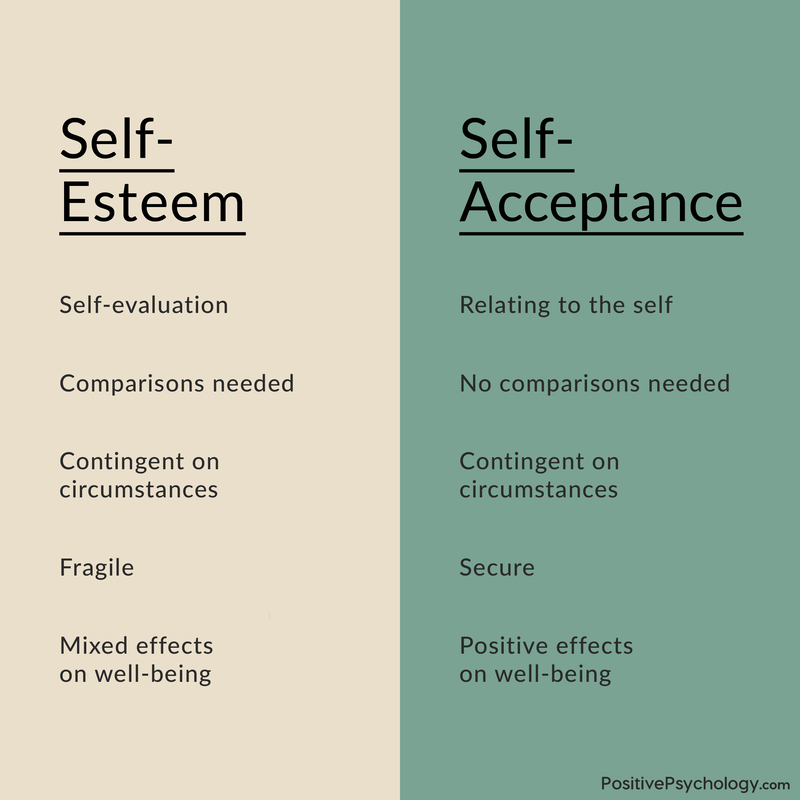
Identifying and Challenging Core Beliefs
Similar to challenging negative thoughts, it can be an extremely effective therapeutic technique to discover, identify, and challenge your core beliefs. We often carry negative or false unconscious or semiconscious beliefs, never stopping to recognize the values and norms that we buy into on a daily basis.
This exercise will help you or your client explore and define deeply held beliefs that guide thoughts and behavior.
The worksheet begins with an explanation of what core beliefs are:
“Core beliefs can be defined as the very essence of how people see themselves, others, the world, and the future.”
Next, it explains how core beliefs can influence one’s thinking and emotions through an example interaction.
“Interaction: You are attending an interview for a job that you really want.”
In this situation, you must choose between three briefcases to bring along to work, each representing a different core belief:
Purple briefcase—“I’m talented”
Internal thought associated: “I am naturally adept with lots of experience in this field. I deserve this role.”
Your reaction: You feel confident as you enter the interview, and subsequently land the job.
Orange briefcase—“I’m unsure whether I’m talented.”
Internal thought associated: “I have lots of experience and I think I’m good, but someone else will probably get the job over me.”
Your reaction: You don’t feel great heading into the interview. You relatively positive feedback but don’t land the role.
Green briefcase—“I’m not talented.”
Internal thought associated: “There’s no way I’m getting this job. Other candidates are much more capable than me.”
Your reaction: You don’t get the job.
These examples show that the thoughts we carry with us, everywhere we go, can have a profound impact on our feelings, our behavior, and the associated outcomes.
Finally, the worksheet presents an opportunity to apply what you have learned from these examples to your own life. You are prompted to identify three negative core beliefs and three reasons why each belief is not true.
It can be difficult to identify the first core belief, especially if you have several very deeply held negative beliefs that you have never even considered challenging before. However, once you get the ball rolling with the first belief, it should get easier as you go.
To give this Core Beliefs Suitcases worksheet a try, follow the link.
Assertive Communication Worksheet
Low self-esteem and poor or underdeveloped communication skills often go hand-in-hand (Blood & Blood, 2004). It can be difficult to share feelings with others if you don’t feel your feelings have value, an all-too-common symptom of low self-esteem.
Learning to communicate assertively will not only help you form better relationships and find new opportunities, but it can also facilitate a shift in the way you think about yourself (Law & Sivyer, 2003).
The word “assertive” may make people with low self-esteem hesitant. Being assertive might sound overly aggressive, pushy, or just too out of character.
The worksheet addresses this right away with an explanation about how three common communication styles differ:
- Aggressive Communication
Defined by speaking in a mean, harsh, or sarcastic manner, taking instead of compromising, maintaining glaring eye contact and speaking in loud or threatening tones, putting others down, being inappropriately honest, and bullying or trampling others. - Assertive Communication
Defined by being firm but polite, compromising, maintaining warm and friendly eye contact and a conversational tone, building up others and oneself, being appropriately honest, and standing up for oneself. - Passive Communication
Defined by being too nice or weak, being overly compliant, avoiding eye contact, speaking softly, putting oneself down, being emotionally dishonest, and allowing others to trample you in conversation.
When laid out in this way, it is clear that being an assertive communicator is nothing like being an aggressive communicator. Assertive communication is simply expressing yourself honestly and directly, while being polite and open.
The worksheet provides space and instructions to record three scenarios in which you communicated assertively and list the emotions you felt afterward. If you can’t think of an instance where you have communicated assertively, don’t worry! You can make that a goal for yourself in the next week.
You can see this Assertive Communication Worksheet for yourself and begin building up your communication skills.
Tips for Overcoming Low Self-Esteem and Low Self-Worth
Apart from these worksheets and activities, there are tons of tips out there for building self-esteem and self-worth.
Dr. John M. Grohol (2011) offers these six tips:
- Take a self-esteem inventory to give yourself a baseline. This can be as simple as writing down 10 of your strengths and 10 of your weaknesses. This will help you to begin developing an honest and realistic conception of your self.
- Set realistic expectations. It’s important to set small, attainable goals that are within your power. For example, setting an extremely high expectation or an expectation that someone else will change their behavior is virtually guaranteed to make you feel like a failure.
- Stop being a perfectionist and acknowledge both your accomplishments and mistakes. Nobody is perfect, and trying to be will only lead to disappointment. Acknowledging your accomplishments and recognizing your mistakes is the way to keep a positive outlook while learning and growing from your mistakes.
- Explore yourself. The importance of knowing yourself and being at peace with who you are cannot be overstated. This can take some trial and error, but it’s a lifelong journey that should be undertaken with purpose and zeal.
- Be willing to adjust your self-image. We all change as we age and grow, and we must keep up with our ever-changing selves if we want to set and achieve meaningful goals.
- Stop comparing yourself to others. Comparing ourselves to others is a trap that is extremely easy to fall into, especially with social media and the ability to project a polished and perfected (and false) appearance. The only person you should compare yourself to is you.
Henrik Edberg (2017) offers a similar set of tips for improving your self-esteem:
- Say “stop” to your inner critic;
- Use healthier motivation habits;
- Take a two-minute self-appreciation break;
- Each evening, write down three things that you can appreciate about yourself;
- Do the right thing;
- Fight against perfectionism;
- Handle mistakes and failures in a more positive way;
- Be kinder toward other people;
- Try something new;
- Stop falling into the comparison trap;
- Spend more time with supportive people (and less time with destructive people);
- Remember the “whys” of high self-esteem.
To read these tips in more detail, you can visit Edberg’s blog post on improving self-esteem here and read more about positive body image here.
Ten Days to Self-Esteem Improvement: An Action Plan
While it can take time to build up a solid sense of self-esteem, it’s possible to kickstart the process.
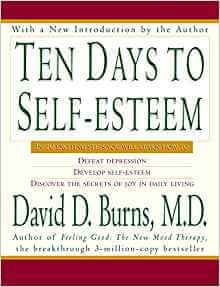
This book helps the reader identify the causes of low self-esteem and provides activities and exercises to start increasing self-esteem. It’s written in plain English, not psychiatric jargon, and has earned an impressive four-star rating on Amazon.
If you don’t have the patience to go through an entire book, there are some simple things you can do now to jumpstart your self-esteem journey:
- Think hard about the root cause(s) of your insecurities. The first step to defeating formidable foes is to learn about them, and this situation is no different. Identifying the events that led to a low sense of self-worth can provide valuable information for challenging these negative beliefs.
- Use the “Negative Self-Talk” and “Identifying and Challenging Core Beliefs” worksheets (available in the adult worksheets section of this article) to help you identify negative thoughts and begin to replace them with alternative thoughts.
- Be kind to yourself. If you find yourself being excessively negative to yourself, stop and consider how you would feel if someone said those things about a close friend or family member. Extend the same compassion you’d give a friend or family member to yourself.
- Make a plan. Set achievable and realistic short-term goals for yourself to complete in the next week or so. Achieving something, no matter how small, can be an excellent boost to your motivation.
- Celebrate your success. When you accomplish a goal, successfully challenge a negative thought, or catch yourself extending kindness toward yourself, mark the achievement with a celebration! Taking the time to revel in your success and enjoy the moment can give you the inspiration you need to continue your journey to self-improvement.
A Take-Home Message
We hope this piece helped you find useful ways to begin or continue improving on your self-esteem, but if you only leave with one lesson learned, we hope it is this:
You can improve. You can get better. You can reach your goals.
It may not feel like it at the moment, but know that no matter how down you might be feeling, there is always room for growth and improvement.
Which techniques have you used to improve your self-esteem? Were they effective? Please share your experience with us in the comments section.
We hope you enjoyed reading this article. Don’t forget to download our three Self Compassion Exercises for free.
- Algoe, S. B., Haidt, J., & Gable, S. L. (2008). Beyond reciprocity: Gratitude and relationships in everyday life. Emotion, 8(3), 425-429.
- Bloch, D., & Merritt, J. (1993). Positive self-talk for children: Teaching self-esteem through affirmations: A guide for parents, teachers, and counselors. New York, NY: Bantam Books.
- Blood, G. W., & Blood, I. M. (2004). Bullying in adolescents who stutter: Communicative competence and self-esteem. Contemporary Issues in Communication Science and Disorders, 31(Spring), 69-79.
- Brockner, J. 1984. Low self-esteem and behavioral plasticity: Some implications for personality and social psychology. In L. Wheeler (Ed.), Review of Personality and Social Psychology, 37: 1732–1741.
- Child Safety and Abuse Prevention Programs. (n.d.). Retrieved from http://www.keepyourchildsafe.org/
- Crocker, J., & Park, L. E. (2003). Seeking self-esteem: Construction, maintenance, and protection of self-worth.
- Dickens, L. R. (2019). Gratitude interventions: Meta-analytic support for numerous personal benefits, with caveats. In L. E. Van Zyl & S. Rothmann, Sr. (Eds.). Positive Psychological Intervention Design and Protocols for Multi-Cultural Contexts (pp. 127-147). Switzerland, AG: Springer.
- Edberg, H. (2017). How to improve your self-esteem: 12 Powerful tips. Retrieved from http://www.positivityblog.com/improve-self-esteem/
- Ellis, A. (1994). Reason and emotion in psychotherapy. Birch Lane Press.
- Ellis, A. (1976). RET abolishes most of the human ego. Psychotherapy: Theory, research & practice, 13(4), 343.
- Grohol, J. (2011). 6 tips to improve your self-esteem. Retrieved from https://psychcentral.com/blog/archives/2011/10/30/6-tips-to-improve-your-self-esteem/
- Kaczmarek, L. D., Kashdan, T. B., Drążkowski, D., Enko, J., Kosakowski, M., Szäefer, A., & Bujacz, A. (2015). Why do people prefer gratitude journaling over gratitude letters? The influence of individual differences in motivation and personality on web-based interventions. Personality and Individual Differences, 75, 1-6.
- Kernis, M. H., & Lakey, C. E. (2010). Fragile versus secure high self-esteem: Implications for defensiveness and insecurity. Psychology Press.
- Law, J., & Sivyer, S. (2003). Promoting the communication skills of primary school children excluded from school or at risk of exclusion: An intervention study. Child Language Teaching and Therapy, 19(1), 1-25.
- Lynch, S. M., & Graham-Bermann, S. A. (2000). Woman abuse and self-affirmation: Influences on women’s self-esteem. Violence Against Women, 6(2), 178-197.
- MacInnes, D. L. (2006). Self‐esteem and self-acceptance: an examination into their relationship and their effect on psychological health. Journal of Psychiatric and Mental Health Nursing, 13(5), 483-489.
- Myers, D. G., & Diener, E. (1995). Who is happy? Psychological Science, 6(1), 10-19.
- Practical Tools and Advice to Overcome Low Self Esteem (n.d.). Retrieved from http://www.self-esteem-school.com/
- Self-Esteem Experts: Nurturing Vibrant Self-Esteem (n.d.). Retrieved from http://www.self-esteem-experts.com/
- Waters, L. (2012). Predicting job satisfaction: Contributions of individual gratitude and institutionalized gratitude. Psychology, 3(12A special issue), 1174-1176.
- Wood, A. M., Froh, J. J., & Geraghty, A. W. (2010). Gratitude and well-being: A review and theoretical integration. Clinical Psychology Review, 30(7), 890-905.
Let us know your thoughts
Read other articles by their category
- Body & Brain (49)
- Coaching & Application (57)
- Compassion (26)
- Counseling (51)
- Emotional Intelligence (24)
- Gratitude (18)
- Grief & Bereavement (21)
- Happiness & SWB (40)
- Meaning & Values (26)
- Meditation (20)
- Mindfulness (45)
- Motivation & Goals (45)
- Optimism & Mindset (34)
- Positive CBT (28)
- Positive Communication (20)
- Positive Education (47)
- Positive Emotions (32)
- Positive Leadership (18)
- Positive Parenting (4)
- Positive Psychology (33)
- Positive Workplace (37)
- Productivity (16)
- Relationships (46)
- Resilience & Coping (36)
- Self Awareness (21)
- Self Esteem (37)
- Strengths & Virtues (31)
- Stress & Burnout Prevention (34)
- Theory & Books (46)
- Therapy Exercises (37)
- Types of Therapy (64)
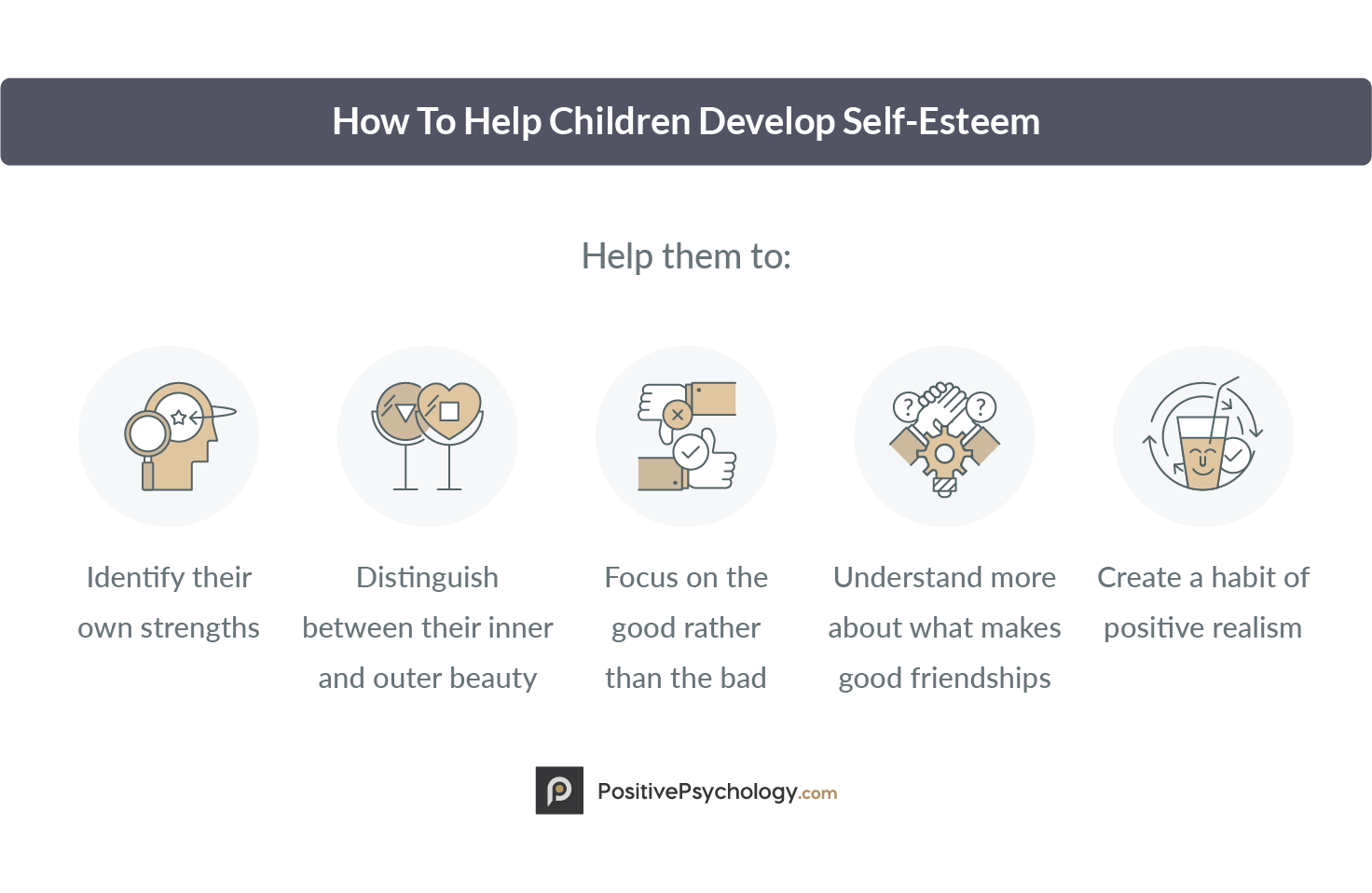



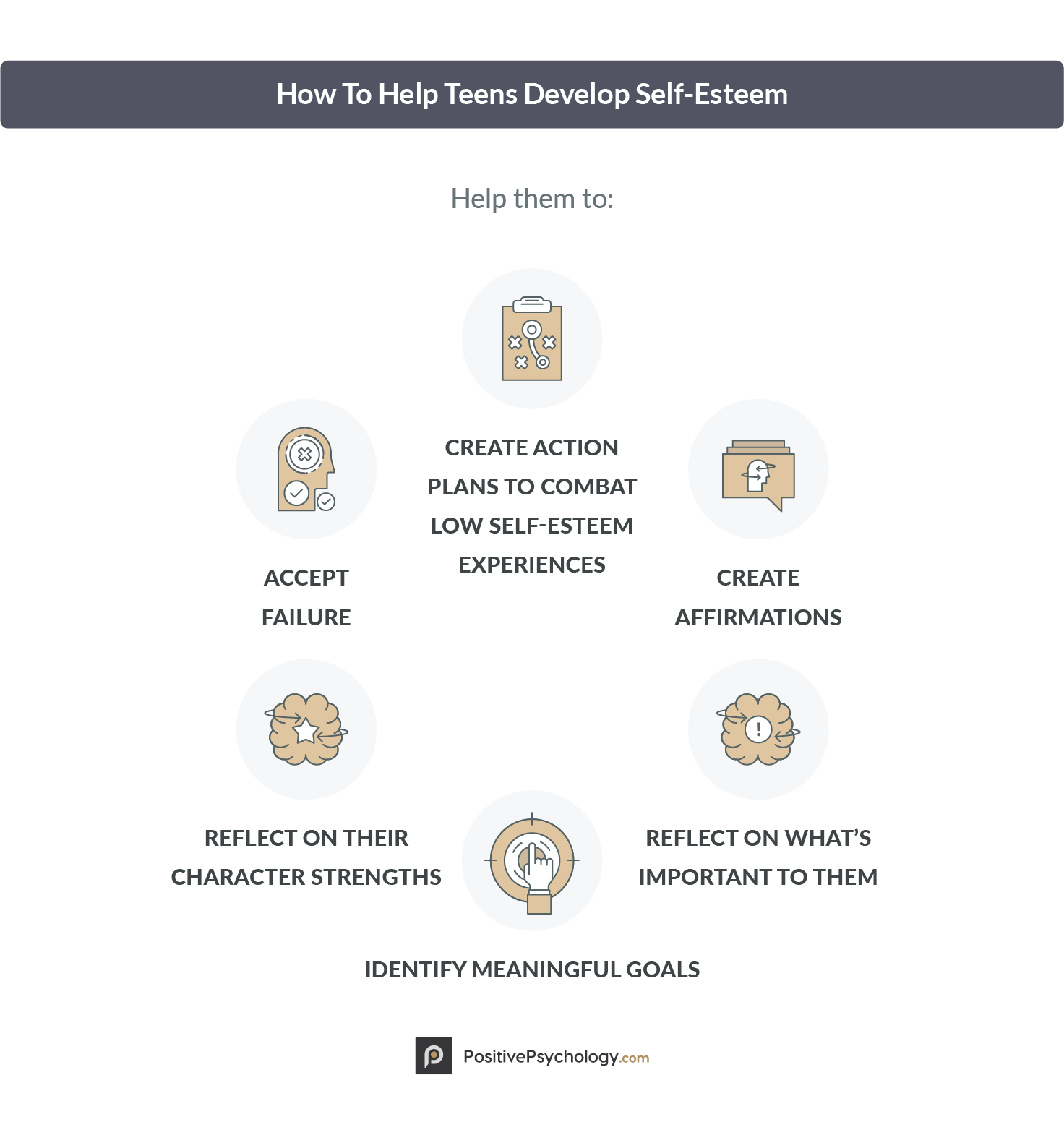
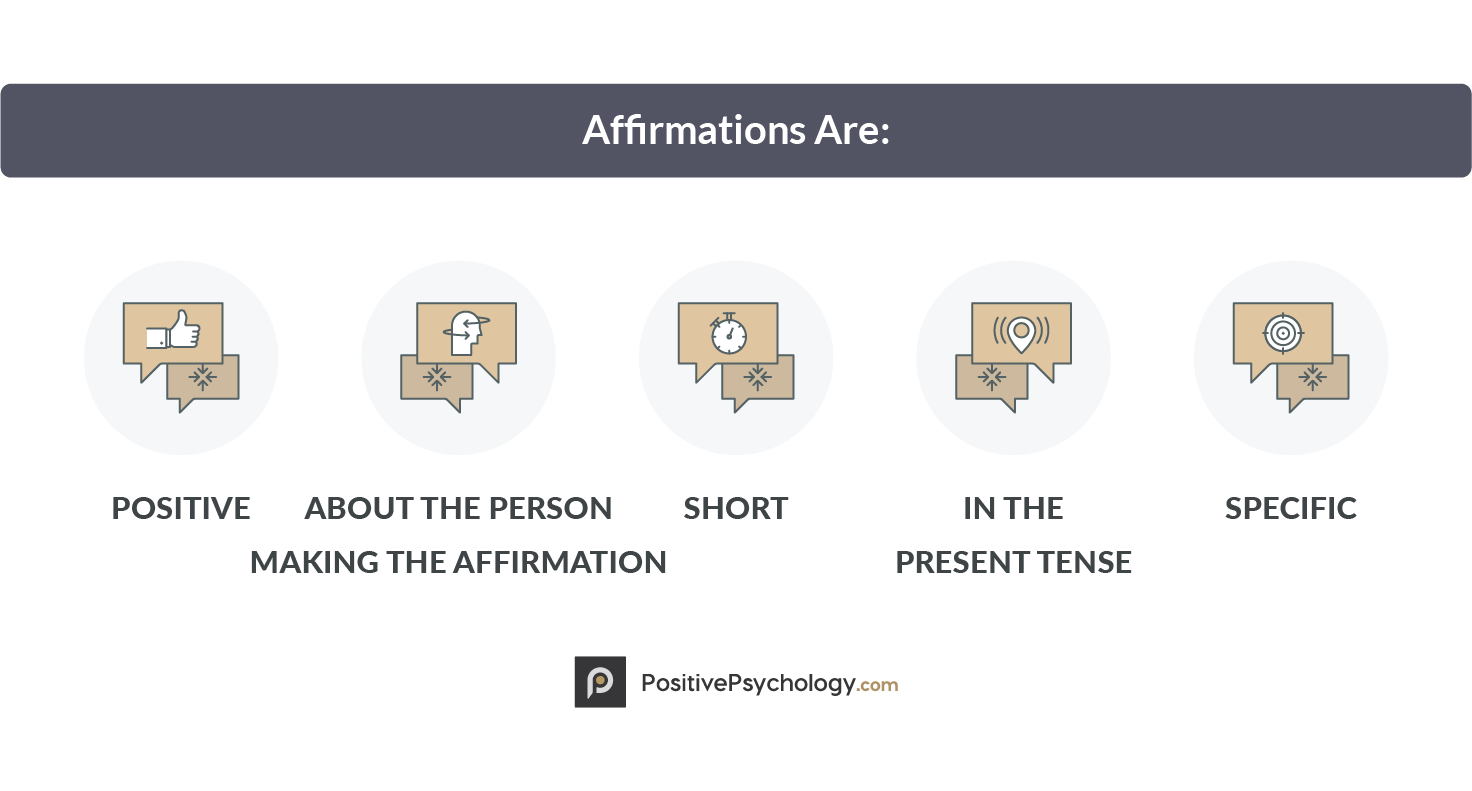
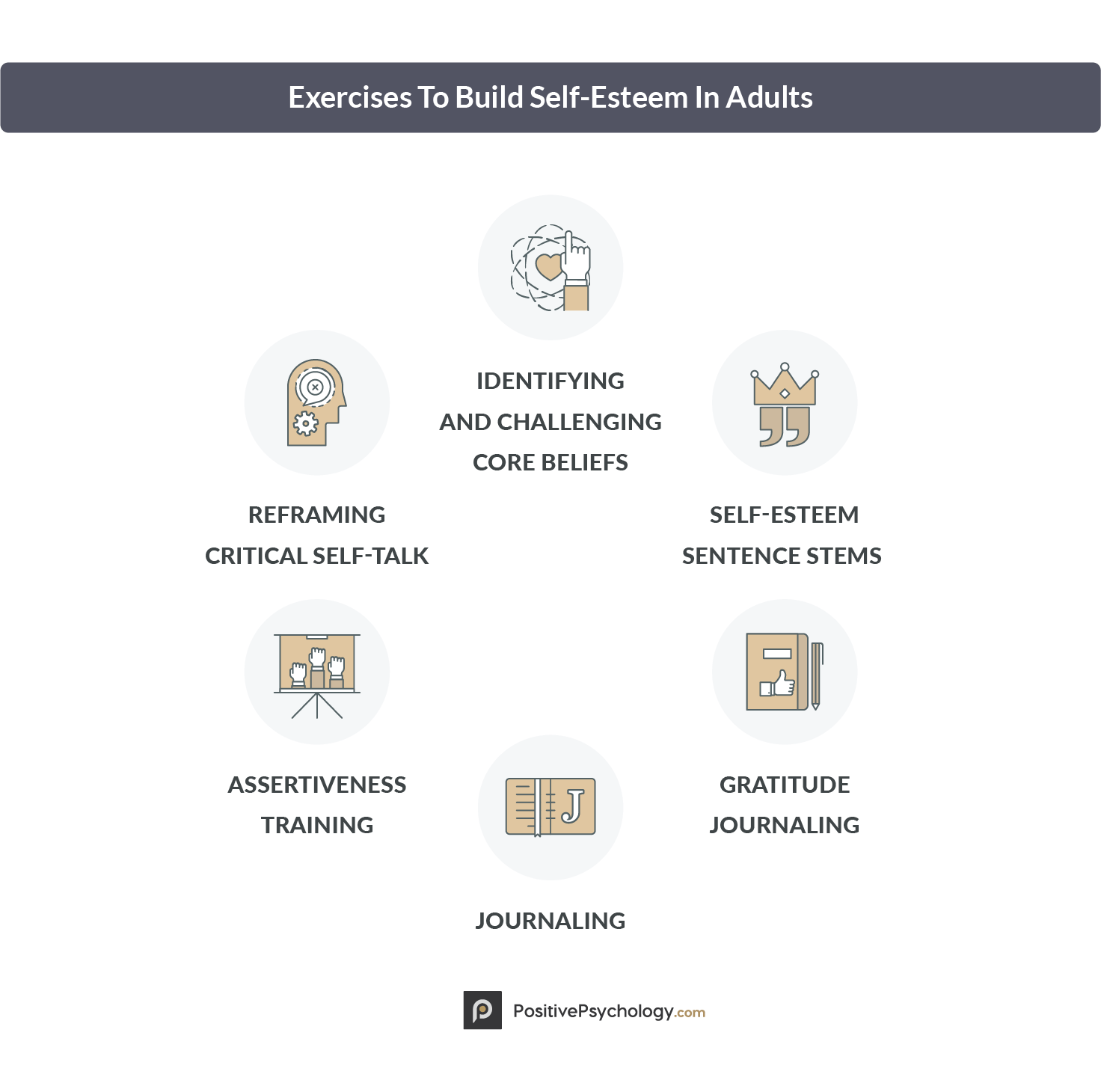
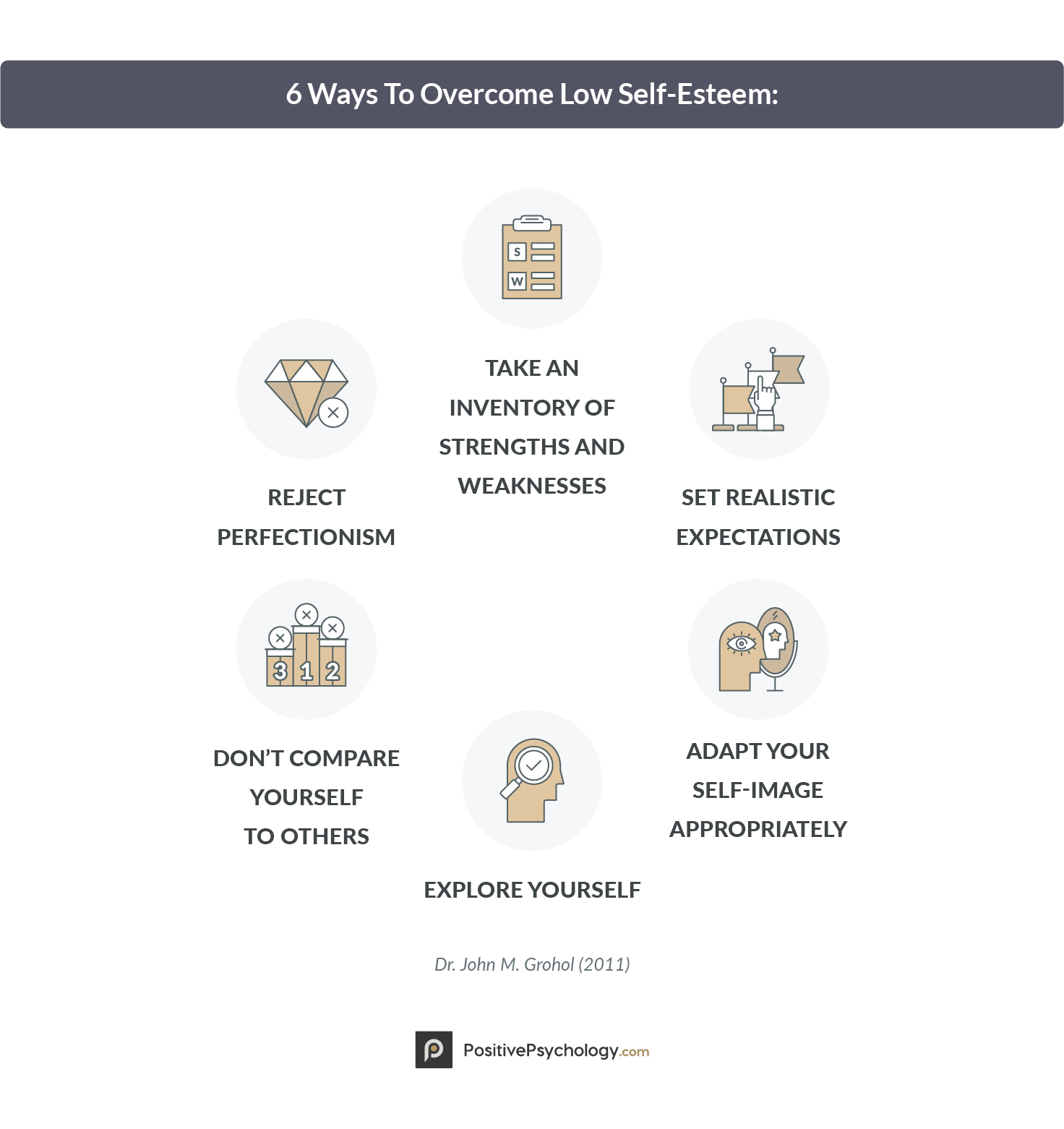




What our readers think
Hi! I am a sophomore student of Psychology at Bataan Peninsula State University, Bataan, Philippines 2100. As a requirement for our course: Experimental Psychology, my group and I are interested in boosting self-esteem among female students using Positive Psychology.
Upon searching for materials we can use, I stumbled upon this article and I found it suitable to use for our study.
Now, I am writing to ask permission if we can use the worksheets above for our study. Rest assured that we will cite the author and your site as our references if you grant us our request. But if not, we humbly accept it and find another material.
Thank you for your kind consideration.
Hi Kristine,
Glad you found the questions helpful! Yes, feel free to use these worksheets for your research.
Good luck with your research!
Warm regards,
Julia | Community Manager
amazing
Thanks for sharing, these resources are useful. i have been looking for some material on self esteem to take a session for the children from difficult circumstances, and i appreciate so many ideas you have shared to build self esteem. thank you once again.